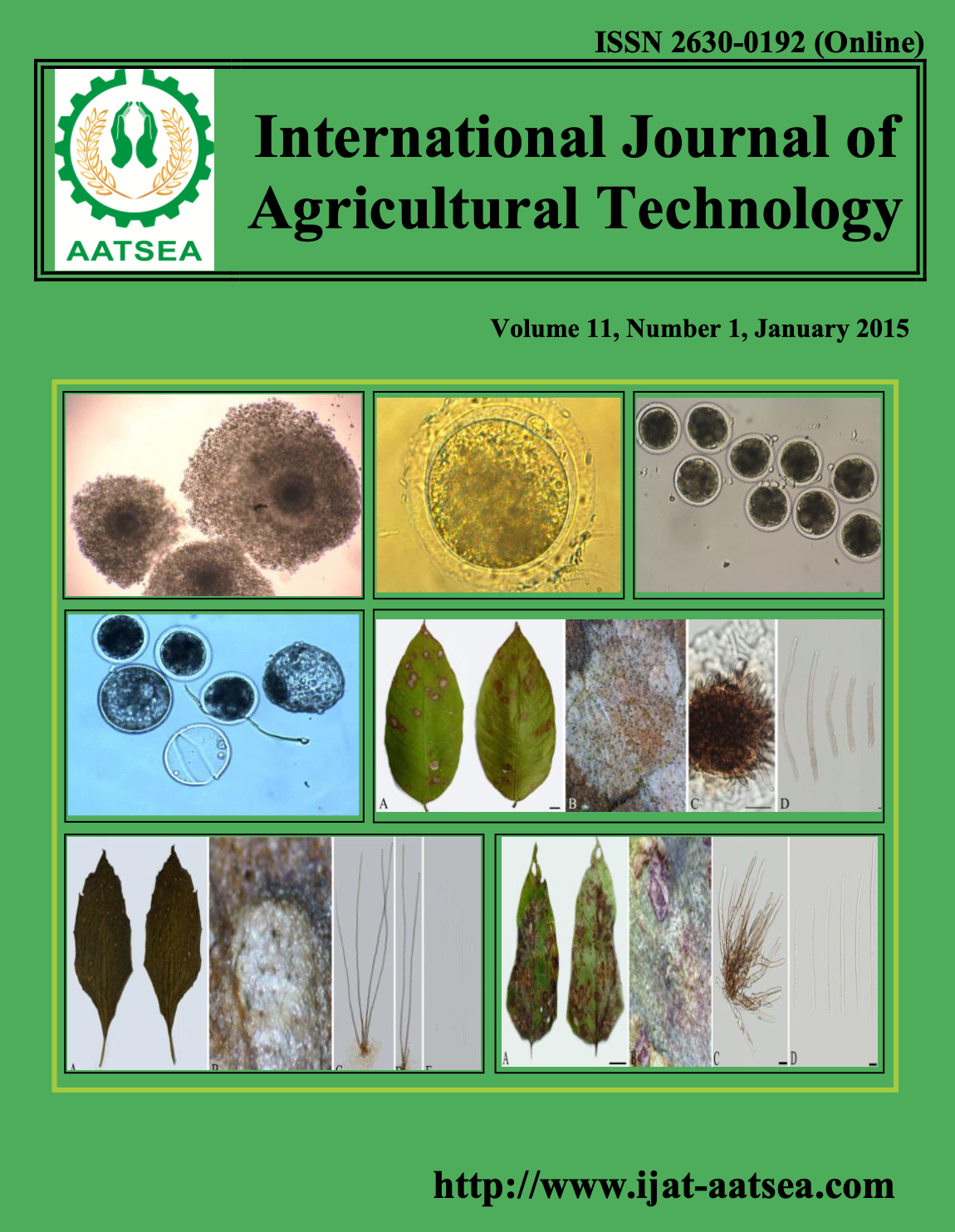A case study of energy ratio in agro-forestry systems (date palm and wheat).
Main Article Content
Abstract
structured
questionnaires. The results showed that in the system of agroforestry of date and wheat, the total energy inputs are 53262.36 MJ ha and the total energy outputs are 129614.05 MJ ha. Therefore, the energy ratio was calculated 2.43 in agroforestry system and 4.20 in the date monoculture system. This may be due to the use of chemical fertilizers in the wheat farming. The results also revealed that in date and wheat agroforestry, a cycle between human, livestock and plant is created while the rise in biodiversity and the farmers’ income. In addition to provide part of the required forage, it reduces the waste.
Article Details

This work is licensed under a Creative Commons Attribution-NonCommercial-NoDerivatives 4.0 International License.
References
Ghorbani, R., Mondani, F., Amirmoradi, S. H., Feizi, H., Khorramdel, S., Teimouri, M., Sanjani, S., Anvarkhah, S. and Aghel, H. (2011). A case study of energy use and economical analysis of irrigated and dry-land wheat production systems. Applied Energy 88:283-288.
Gordon, A. M. and Newman, S. M. (1997). Temperate agroforestry systems. Wallingford, UK: CAB International Press
Gundogmus, E. (2006). Energy use on organic farming: A comparative analysis on organic versus conventional apricot production on small holdings in turkey. Energy Conversion and Management 47:3351-3359.
Hoeppner, J.W., Entz, M. H., McConkey, B. G., Zentner, R. P. and Nagy, C. N. (2005). Energy use and efficiency in two Canadian organic and conventional crop production systems. Renewable Agriculture and Food System 21:60-67.
James, B., Nair, P. K. R. and Rao, M. R. (1995). Productivity of hedgerow shrubs and maize under alley cropping and block planting systems in semiarid Kenya. Agroforestry Systems 31:257-274.
Jianbo, L. (2006). Energy balance and economic benefits of two agroforestry systems in northen China. Agricultural Ecosyst Environment 116:225-262.
Karimi, M., RajabiPour, A., Tabatabaeefar, A. and Borghei, A. (2008). Energy analysis of sugarcane production in plant farms a case study in Debel Khazai Agro-industry in Iran. American-Eurasian Journal of Agricultural and Environmental Science 4:165-171.
Lin, H. C., Huber, J. and Hülsbergen, K. J. (2013) Energy use efficiency of organic and agroforestry farming systems. Paper presented at 12 Wissenschaftstagung Ökologischer Landbau, Rheinische Friedrich-Wilhelms-Universität, Bonn, 5-8 Mar 2013.
Mazloumzadeh, S. M., Shamsi, M. and Nezamabadi-pour, H. (2010). Fuzzy logic to classify date palm trees based on some physical properties related to precision agriculture. Precision Agriculture 11:258-273.
Mazloumzadeh, M. and Shamsi, M. (2006). Evaluation of alternative date harvesting methods in Iran. Proceedings of the III International Date Palm Conference 736. pp. 463-469.
Mobtaker, H. G., Keyhani, A., Mohammadi, A., Rafiee, S. and Akram, A. (2010). Sensitivity analysis of energy inputs for barley production in Hamedan Province of Iran. Agricultural and Ecosystems Environment 137:367-372.
Mohammadi, A. and Omid, M. (2010). Economical analysis and relation between energy inputs and yield of greenhouse cucumber production in Iran. Applied Energy 87:191-196.
Mohammadi, A., Rafiee, S. H., Mohtasebi, S. S. and Rafiee, H. (2010). Energy inputs – yield relationship and cost analysis of kiwifruit production in Iran. Renewable Energy 35:1071-1075.
Mohammadi, A., Tabatabaeefar, A., Shahin, S. H., Rafiee, S. H. and Keyhani, A. (2008). Energy use and economical analysis of potato production in Iran a case study: Ardabil province. Energy Conversion and Management 49:3566-3570.
Moore, S. R. (2010). Energy efficiency in small-scale biointensive organic onion production in Pennsylvania, USA. Renewable Agriculture and Food System 25:181–188.
Nautiyal, S., Maikhuri, R. K., Semwal, R. L., Rao, K. S. and Saxena, K. G. (1998). Agroforestry systems in the rural landscape- a case study in garhwal himalaya, India. Agroforestry Systems 41:151-165.
Omani, A. and Chizari, M. (2008). Analysis of farming system sustainability of wheat farmers in Khuzestan province of Iran, Green Farming. International Journal of Agricultural Science 6:5-8.
Ozkan, B., Akcaoz, H. and Fert, C. (2004). Energy input–output analysis in Turkish agriculture. Renewable Energy 29:39-51.
Panahi, F. H. and Kafi, M. (2012). Assess the energy budget in farm production and productivity of potato (Solanum tuberosum L.) in Kurdistan, case study: Plain Dehgolan.
Pimentel, D., Berardi, G. and Fast, S. (1983). Energy efficiency of farming systems: organic and conventional agriculture. Agricultural and Ecosystems Environment 9:359-372.
Salimi, P. and Ahmadi, H. (2010). Energy inputs and outputs in a chickpea production system in Kurdistan, Iran. African Crop Science Journal 18:51-57.
Tabar, I. B., Keyhani, A. and Rafiee, S. H. (2010). Energy balance in Iran's agronomy (1990- 2006). Renewable and Sustainable Energy Reviews 14:849-855.
Thevathasan, A. V., Gordon, A. M., Simpson, J. A., Reynolds, P. E., Price, G. W. and Zhang, P. (2004). Biophysical and ecological interactions in a temperate tree-based intercropping system. Journal of Crop Improvement 12:339-363.
Tuomisto, H. L., Hodge, I. D., Riordan, P. and Macdonald, D. (2012). Comparingenergy balances, greenhouse gas balances and biodiversity impacts of contrastingfarming systems with alternative land uses. Agricultural Systems 108:2-49.
Yilmaz, I., Akcaoz, H. and Ozkan, B. (2005). An analysis of energy use and input costs for cotton production in Turkey. Renewable Energy 30:145-155.
Ziaei, S. M. and Mazloumzadeh, S. M. (2013). A comparison of energy use and productivity of wheat and barley (case study). Journal of the Saudi Society of Agricultural Sciences 14:19-25.


